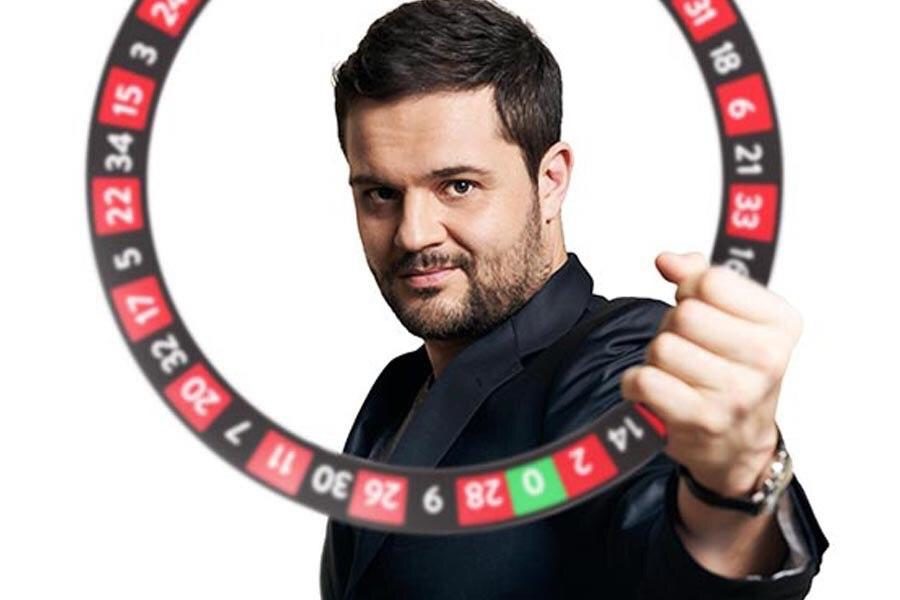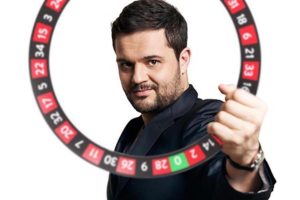“The gambling market is continually changing”

Dejan Orlac, owner and head of design at Royce&Bach, talks about how his company can help operators and suppliers enhance the gaming experience.
UK.- Royce&Bach is a specialist design studio working providing its services to the gaming sector.
We sat down with Dejan Orlac, owner and Head of Design, to learn more about the company and its clients.
Royce&Bach: What is Royce&Bach?
Dejan Orlac: “Royce&Bach embodies strategic design, creativity, innovation, style, and tradition. Our passion is to create innovative gaming products that add value to players, operators, and casino vendors. Through strategic, industry-informed, and innovation-driven design, Royce&Bach strives to enhance players’ experience and maximize operators’ return on investment. We design all kinds of online and land-based casino-relevant experiences and equipment. Electronic roulettes, slot machine cabinets, player terminals, user interfaces, and casino games are just a few of the many products we designed for our clients. Ultimately Royce&Bach uncovers hidden potential and delivers innovative products that exceed our client’s expectations.”
“Royce&Bach uncovers hidden potential and delivers innovative products”
R&B: Where did the idea for a design studio specializing in the gambling industry come from?
DO: “Looking back, it was all meant to be. I was fortunate to have gained experience from designing for the gaming industry at an early age, which made me understand what drives me. Due to unexpected circumstances, my journey took a spin into the mainstream industries. I’ve designed products for the medical industry, toys, beauty, fashion, electronics, and innovations. As a by-product, I ended up with a lot of cross-industry experiences that are relevant to the gaming industry. Through Royce&Bach, I can now share my passion and knowledge with our clients.”
R&B: What is, from your perspective, the challenges and the opportunities in design for the gaming industry?
DO: “Planning design for any gambling solution creates challenges on many levels. First, the product design must be fit for the manufacturer and easy-to-operate for the vendor. The vendor is the actual buyer who has to service and maintain the product. Second, players require much understanding. They expect to receive a completely different user experience than the vendor. Both use the same product but on different levels and have different requirements. Satisfying both is very challenging. That generally makes products complicated to design and produce because they’re often required to do too much at once.
“The gambling market is also continually changing. It needs to adapt to new generations of players through technology, better research, and innovation. That presents a multitude of design pathways that can open up opportunities to create innovative designs that amuse existing players or attract new ones.”
“The gambling market needs to adapt to new generations of players”
R&B: How do you bring your broad cross-industry experience into the field of gaming?
DO: “At Royce&Bach, we use strategically planned design to maximize the experience for operators, vendors, and, last but not least, players. In our industry, operators, and vendors underestimate the value of strategic planning in design as a potential for a successful business. We try to convince our clients to make a bet and invest more in product design and the development cycle. Companies like Samsung or BMW spend a fortune on research, concepts, and design. It enables them to stay on top of their game.”
R&B: At an early stage in your career you designed and made the iconic Archipelago 8 player roulette. It looked very different from the competition at that time. What’s the story behind that design?
DO: “We were very young then, and the idea was to create something unique and different from existing products on the market. The process started with in-depth research of all roulettes on the market. We’ve also talked to casino vendors, manufacturers, and players. It was essential to receive insights from all parties who use the product. We analyzed the information gathered and prepared a design strategy. After many concept designs, we found the one that works and built the product.
“We found success in the Asian market”
“At that time, there was no roulette with proper ergonomics. That became our first challenge. Moving all components away from the leg area enabled players to sit comfortably. They stayed relaxed and played longer. We also wanted to move away from sheet metal technology. It limits the design language of the product. Using roto-moulded plastics allowed us to design a much more attractive exterior. Besides that, we developed custom light controllers that enabled the machine to communicate game states through external light effects. It made the roulette much more attractive to potential players passing by. With the prepared design strategy, we were aiming at a more premium market with high-end casinos. We found success in the Asian market. MGM Macau was one of many casinos where our roulette became very successful.”
R&B: If companies already have in-house designers, do they need external design help?
DO: “If you want to stay ahead, you need to collaborate with someone who can work outside perceived limitations. The in-house design team usually has plenty of work supporting ongoing business demands. That is why it’s essential to include outside professionals who are well informed overall and have cross-industry experiences to come up with fresh ideas. Flexibility, free-thinking, insight, and the quality of specialized people enables our clients to offer products that exceed expectations. Most everyday consumer products that we use were conceived and designed by external design studios. Big corporations rely on smaller companies. A lot of talented and skilled people will rather work for a smaller studio than a corporation.”
R&B: What can you tell us about the projects you are currently working on?
DO: “A couple of companies are interested in bringing heavily based arcade and skill-based gaming experiences to the casino floor. They are looking for our help with the right conceptualization and design of that. Besides that, we are working on new slot machine designs, electronic roulette, and also game development and design. We are very excited about that. There is also a constant demand for digital products.
“We are looking forward to building that side of the business in the next year as well.”
“The future casinos need to be arcade-style gaming venues”
R&B: In your opinion, what are the issues in current casinos, and how does the future casino look?
DO: “Not all casinos share the same issues. However, in general, the current casino offer does not satisfy the modern generation of potential players. New players prefer the comfort and the convenience of their homes or mobile phones to gamble. Land-based casinos need to experiment with what they offer, whom they offer it to, and how. The future casinos need to be arcade-style gaming venues paired with the excitement of gambling. They should include games, multiplayer tournaments, and other skill-driven content that speaks to the younger generations. Casinos need to continue offering a beautiful environment and excellent service on top of relevant gaming experiences. That will give players a reason to visit a casino instead of gambling at home. The quality of the content offered will make them stay.”
R&B: Any suggestions for existing business owners reading this?
DO: “Collaborate with someone who can think and work outside perceived limitations. It can uncover hidden potential you never knew was there. Do your research, look deep to avoid surprises later. Design to attract, impress, and satisfy. Be different. It will help you stay on track and continuously evolve in the ever-changing gaming environment. Design is the best tool to explore new opportunities, adapt, and plan for the future. Design is also your best bet in the product development journey to success. It’s an investment that pays back double, at least.”










